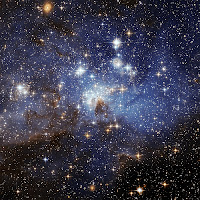Buying the Cosmos + TV Ratings + Head Heat Loss Myth
 |
| Buying stars? |
Part 1:
So, can you actually buy a start and name it?
It is true! Although it is quite expensive, you can buy a start and name it.
"Who gave them the right to name stars? And then charge someone for the name?"
The answer is simple: Nobody gave them the right. They just do it.
At least half a dozen companies are offering to attach names to stars while making the designations seem official, providing a fancy certificate and directions for locating the newly named point of light. Their promotional strategies range from harmlessly playful to bordering on fraudulent. Meanwhile the night sky is being populated with unofficial names, at $49.95 a pop, one unsuspecting buyer at a time.
What you really get
It's not hard to grasp the romantic or otherwise wondrous reasons someone might have for buying a star name, especially as a gift. It's also important for potential buyers to know what they'd actually get.
Pretty much nothing, beyond some very expensive paper.
Only the International Astronomical Union (IAU) has the right to officially name celestial objects. It does so for scientific purposes only and does not recognize any commercial naming systems. The IAU, viewed by astronomers as the reputable governing body, is well aware of the sea of commercial star vendors. It has this to say:
"The IAU dissociates itself entirely from the commercial practice of 'selling' fictitious star names."
Some folks wonder, understandably, why stars are not given names in lieu of boring numbers.
The IAU does recognize a handful of ancient star names, given to some of the brightest stars in our sky. But with millions and millions of stars out there, it wisely decided long ago that a numbering system is more useful for scientists.
As the IAU puts it, "Finding Maria Gonzalez in Argentina or John Smith in Britain just from their names is pretty hopeless, but if you know their precise address (perhaps from their social security number) you can contact them without knowing their name at all."
As a web site called Name a Star admits, "Scientists will never want to deal with finding 'Aunt Martha's Star.'" This company deserves a gold star for forthrightness.
Part 2:
Install TV meter boxes in a sampling of homes. These are boxes that keep track of exactly what a person is watching at any moment, and for how long. The sampling of homes you choose is important; they should be people from a variety of different age groups, nationalities and sexes. Nielsen Media Research, the company in charge of tracking TV ratings for the United States and Canada, keeps meter boxes in about 5,000 U.S. homes at any given time.
Obtain national statistics on the citizens of the United States. The Census can be extremely helpful in this, as it breaks down people by age, income, etc.
Take a look at the results you are getting from the meter boxes. Each person that watches a particular show is a representative for the part of the U.S. he most fits into. For example, if a house containing a husband and wife in their forties with no kids watched a particular show at a particular time, it is safe to assume most people that fit that specific description watched the same show as well. You would compare this sampling with all others that met that exact description and see what percentage of your samples watched a show, and then apply that percentage to the general population.
Multiply the number of people meeting a specific description in your sample group who watched a particular show by the number of people in the U.S. who fit that particular description. The number you get is the estimated number of people who watched that show.
Science Myth of the Week:
So, do you lose most of your heat from your head?
The origin came from the US military in the 1970s saying that 45% to 48% of the heat is lost from the head.
But, it's actually not true.
No comments:
Post a Comment